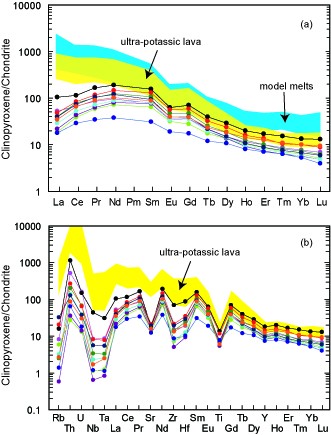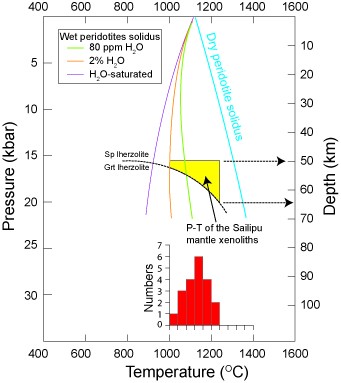Vice Professor LIU Chuanzhou and his team research peridotite xenoliths entrained in Middle Miocene ultrapotassic lavas from Sailipu, southern Tibet.
Peridotite xenoliths are rare in the Tibetan Plateau, and the locality of Sailipu is the only known occurrence of peridotite xenoliths in the hinterland of the plateau. The Sailipu peridotite xenoliths provide an opportunity to reveal the compositional features and thermal state of the lithospheric mantle beneath southern Tibet during the Middle Miocene, which might shed light on the mechanism of plateau uplift.
The results suggest the existence of hot, highly metasomatized lithospheric mantle beneath southern Tibet during the Middle Miocene, and thus support the idea that convective thinning of the lithosphere was responsible for the uplift of the plateau. The relict mantle was later removed or squeezed northward by the underthrusting Indian continental lithosphere, which terminated magmatism in southern Tibet and played a role in creating the entire plateau.

Figure 1. A: Rare earth element and clinopyroxene from Sailipu mantle xenoliths, B: Trace element patterns.

Figure 2. Pressure-temperature diagram of Sailipu mantle xenoliths.
Liu et al. Fragments of hot and metasomatized mantle lithosphere in Middle Miocene ultrapotassic lavas, southern Tibet. Geology 2011, 39(10): 923-926 (Download Here)